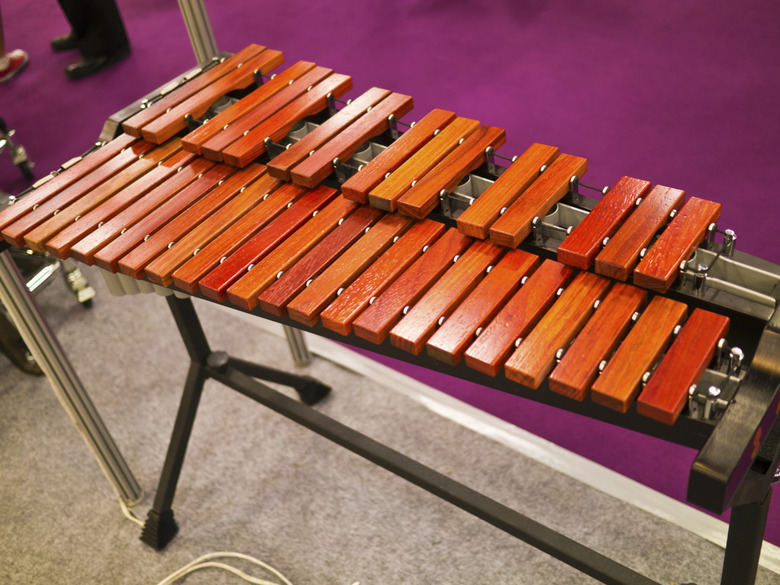Sources Of Sound Energy
The natural world is awash in sound. This is even more true of the man-made world. Whenever an object sends out vibrations you can hear, that is, between 20 and 20,000 cycles per second, it produces sound energy. The vibrations can be carried through air, water or solid materials. Mechanical, electrical, or other forms of energy make objects vibrate. When this happens, the energy radiates as sound.
Acoustic Instruments
Acoustic Instruments
Pianos, drums, and xylophones are percussive instruments. With these, a hammer strikes an object and makes it vibrate. The piano wire, the drum head and the xylophone bar vibrate in different ways, making waves in the air that we then hear. These instruments also have built-in amplification. The large body of the piano acts as a sounding board, making the vibrating wire louder.
Brass and wind instruments work differently. They set a column of air into resonance, making strong vibrations. The instrument's valves change the resonant frequency, and thus the pitch of the instrument. They usually have a flared opening to achieve natural amplification.
Electronic Instruments
Electronic Instruments
Electrical vibrations are the starting point of sounds from electronic organs and synthesizers. Circuits create a variety of waveshapes that might mimic standard instruments or make totally new sounds. Since wave generation takes place electronically, it's easy to make new sounds with many different effects. It becomes sound, however, only when the electronic signal goes to an amplifier and speakers.
Living Things
Living Things
Animals and people make sounds with their vocal cords, their mouths and other body parts. Vocal cords vibrate from air pressure, making sound. Insects rapidly rub their legs, wings or other organs to make noise. In the jungle, parrot screeches can carry for miles. Muscles turn chemical energy into mechanical energy. Squeezing and rubbing body parts turn mechanical energy into sound energy.
Machines
Machines
In industry, machines make sound in ways similar to musical instruments. However, machines operate at higher speeds and with more power than instruments. They can be designed with sound-absorbing materials to make them quiet, but they're seldom designed to sound pleasant. Loud, rapid impacts of metal on stone make the percussive noise of a jackhammer. Metal parts, rubbing from friction, create the squeal of brakes. Fifty ignitions per second and the clatter of spinning gears make the roar of an engine.
Nature
Nature
The energy released when falling water hits a beach makes the sound of surf. Lightning explosively heats air, sending sound waves we hear as thunder. Wind, produced by heat from the sun, makes noise through setting objects into vibration. Wind can howl against itself when it gusts.
References
Cite This Article
MLA
Papiewski, John. "Sources Of Sound Energy" sciencing.com, https://www.sciencing.com/sources-sound-energy-5484025/. 27 April 2018.
APA
Papiewski, John. (2018, April 27). Sources Of Sound Energy. sciencing.com. Retrieved from https://www.sciencing.com/sources-sound-energy-5484025/
Chicago
Papiewski, John. Sources Of Sound Energy last modified March 24, 2022. https://www.sciencing.com/sources-sound-energy-5484025/


